2022 Nissan Pathfinder Review: First Drive

FAST FACTS
| Engine: | 3.5L V6 |
| Output: | 284 hp, 259 lb-ft |
| Transmission: | 9AT, AWD |
| US fuel economy (MPG): | 20/25/22 |
| CAN fuel economy (L/100KM): | 11.6/9.2/10.5 |
| Starting Price (USD): | $34,560 (inc. dest.) |
| As-Tested Price (USD): | $49,590 (inc. dest.) |
| Starting Price (CAD): | $45,658 (inc. dest.) |
| As-Tested Price (CAD): | $57,208 (inc. dest.) |
Like a suit, the difference between a good and great crossover comes down to the details.
The 2022 Nissan Pathfinder may look like an entirely different suit on the mid-sized rack. That’d be the modernized styling; a new material, if you will. Nissan has stuck with the same basic bones for this latest three-button—er, three-row—crossover, however. From there, the Japanese automaker has tweaked the pattern. Taking inspiration from past Pathfinders, the 2022 model is more rugged, but it also blends in smarter technology, more practicality, and a vastly improved interior.
The detail changes Nissan has wrought on the Pathfinder increase its usefulness, its refinement, and its overall desirability. All this elevates the Pathfinder above your typical off-the-rack mid-sized crossover, turning a forgotten option into one of the class front-runners.
What’s new?
Visually, quite a lot. Tastes being what they are, your opinion will surely vary from this author’s. To these eyes though, the latest style is a massive improvement over the permanently frumpy look of the previous model. The Pathfinder now makes a strong first impression with a square jaw and clean, blocky flanks. C-shaped headlights bring it in line with current Nissan family look. There are a handful of clever design touches that harken back to the original Pathfinder too, like the reverse-rake C-pillar and the three slots at the top of the grille. In the available two-tone paint options, like this tester’s appropriate green-and-black look, the Pathfinder cuts a crisp profile. It’s more rugged-looking than any of the Japanese competition, but still has the necessary on-road stance to suggest it’ll be comfy on the daily grind.
Get a Quote on a New Nissan PathfinderUnderneath the new looks, the Pathfinder is far more familiar. This fifth-gen model actually breaks a pattern present since the first Pathfinder; prior to this, the nameplate consistently swapped between body-on-frame (first- and third-gen) and unibody (second- and fourth-gen) construction. Thus, this is the same general Nissan D platform as the last model, though it now features a greater percentage of high-strength steel. Surprisingly, Nissan has shortened the Pathfinder by about an inch, now 197.6 inches (5,019 mm) from 198.5 (5,042 mm). Width is up 0.6 inches (15 mm), to 77.9 inches (1,979 mm), and height increases by half that amount.
The similarities continue in the engine bay, where Nissan’s venerable VQ-series 3.5-liter V6 once again sits East-West. Outputs of 284 horsepower and 259 pound-feet of torque are unchanged. What has changed is the transmission: Nissan has mercifully ditched the continuously variable transmission (CVT), hooking the V6 up to a traditional nine-speed auto. Both front- and all-wheel drive are available (the latter is standard in Canada).
Traditional transmission, traditional ride
I can’t overstate the importance of the transmission swap. The nine-speed doesn’t do anything unusual for the breed: it keeps revs low on the highway, and finds the meat of the powerband when the driver gooses the throttle. If the situation calls for a handful of gear changes, they might take a moment to queue up, but otherwise, the nine-speed is refined. That’s what makes it such a good match for this big cruiser. The old CVT was a droney earsore, and banishing it to the parts bin provides the single biggest change to how the Pathfinder drives.
With the same power figures as before, and a curb weight very slightly lower than the 2020 model, the latest Pathfinder has adequate power for day-to-day activities. No more, no less. The nine-speed also allows Nissan to rate the Pathfinder to a towing maximum of 6,000 pounds when properly equipped.
There are other changes, too. Both the front and rear suspension are more resistant to roll, resulting in a more controlled ride. Truth be told, the passive dampers are a mite too stiff on some of the washboard surfaces outside Kingston, Ontario. The Pathfinder settles down nicely on regular tarmac, however.
SEE ALSO: Mazda CX-9 vs Toyota Highlander ComparisonIn Normal mode, the Pathfinder’s steering is notably over-boosted. I don’t typically recommend wheeling around 16 feet of crossover in a Sport driving mode, but the switch does give the helm a slightly more natural feel. There are no less than seven driving modes to choose from: you’ll also find Eco, Snow, Sand, Mud/Rut and Tow. Strangely, Sport doesn’t noticeably alter throttle response. The test route isn’t exactly an off-roading course, but the Mud/Rut setting makes short work of a small water crossing as well as a steep, rock-strewn descent (the latter with the aid of hill descent control).
Helping improve the Pathfinder’s sure-footedness is a new direct coupling within the AWD system. This eliminates the need for the front wheels to slip before sending power to the rears, which can be up to 50 percent of the available twist.
Fuel economy figures are essentially the same as before. Expect to see up to 27 mpg on the highway, and 22 mpg (10.5 L/100 km) combined with AWD.
SEE ALSO: 2021 Nissan Kicks Review: Rebranding the Modern City CarUpmarket interior
As part of its move to rely less on fleet sales, Nissan has spent the last few years improving the interiors of everything in its lineup. Like the new Rogue, the Pathfinder has seen a dramatic improvement here, with a classed-up cockpit that finally feels worthy of the price tag. This tester’s brown leather looks and feels great. The dashboard and center console design is much cleaner now, too. Like the exterior, the innards of the Pathfinder strike the right balance between rugged and sleek. There’s a whole bunch of crisp digital displays too, in the 9.0-inch center screen, 12.3-inch digital instrument cluster, and 10.1-inch head-up display. All three are easy to navigate. Wireless Apple CarPlay is standard on the Platinum trim; wired pairing is standard elsewhere, and for Android.
SEE ALSO: Toyota RAV4 vs Nissan Rogue ComparisonMy one quibble is the shifter. Plucked from the Rogue, its movement feels insubstantial and cheap. The drive-by-wire system does open up a large under-console storage space, though. There’s ample space in the center console and door cards too, and a small shelf above the glovebox will hold large mobile devices.
Space for people is good, if not class-leading. The front row is vast, while the second row offers up 38.4 inches (975 mm) of headroom and 35.5 inches (902 mm) of legroom. The latter figure looks comparably tight, but most adults should find the middle row plenty comfortable. This top-level Platinum features captain’s chairs, and a easy-to-remove second-row center console. Simply press a button and you can pull it out. A button on both outboard seats accesses Nissan’s EZ-Flex system, which folds the seat out of the way to open up the path to the way-back. It’s surprisingly aggressive, but no worries; a weight sensor will lock out EZ-Flex if it senses someone’s there. That includes child seats, of which the Pathfinder can fit up to five.
The third row is tight, even if it now fits three abreast. Headroom is fine for adults, but the low cushion height and just 28.0 inches (711 mm) of legroom means they won’t want to spend much time back there. At least there are two USB-A slots; other rows get a USB-A and USB-C each. Storage space is 16.6 cubic feet (470 L) with all rows upright; enough to fit four golf bags. Fold them all down and the Pathfinder is wide enough to swallow a sheet of plywood.
Again, let’s talk details. Nissan has thickened the rear windows by 25 percent, and increased the amount of sound deadening. The side mirrors are now door-mounted. There’s a new engine cover. All this and more creates a quieter, more comfortable interior.
Nissan includes nearly every one of its driver assists standard in all 2022 Pathfinders. These include automated emergency braking with pedestrian detection, reverse automatic braking, lane-departure warning, blind-spot monitoring, and auto high beams. Graduate beyond the base model and ProPilot Assist joins the lineup, which merges adaptive cruise control with lane-keep assist. It functions more naturally than before, minimizing “ping-pong” in lanes and varying its speed with added smoothness. A high-res 360-degree camera shows up on the SL trim in America, and SV in Canada.
Who’s the competition?
There’s no shortage of talent in the three-row realm. At the event, the Nissan team acknowledged both the Honda Pilot and Toyota Highlander as the most direct competition. Both are big sellers. The Honda is simply cavernous, while the Toyota is tighter, but offers a rare-for-the-class hybrid option, which allows it to score fuel economy figures around 50-percent better than the Pathfinder.
SEE ALSO: Hyundai Palisade vs Kia Telluride ComparisonStouter challenges arrive in the form of the Hyundai Palisade and Kia Telluride twins. They’re the ones to beat in this class, if not in sales, then in their incredibly appealing combination of affordability, space, and upmarket feel. In Calligraphy trim, the Palisade can even worry some of the premium three-rows out there—a space where the upcoming, related Infiniti QX60 will play.
SEE ALSO: 2022 Infiniti QX60 First Look and PreviewWant something rear-drive? Your choices are American, in the shape of the Ford Explorer and Dodge Durango. These two both offer up additional towing capacity and power, right up to the outrageous 710-horsepower Durango Hellcat.
Don’t forget the affordable Subaru Ascent, nor the sweet-driving Mazda CX-9, either. Like I said, spoiled for choice.
In terms of pricing, the renewed Pathfinder runs right in the middle of the three-row scene. A base front-drive S starts at $34,560 ($45,658 CAD) including destination. The Pathfinder SV ($37,350 / $48,658 CAD) and SL ($40,740 / $52,258 CAD) add highly desirable bits like ProPILOT Assist and leather seating. The high-zoot Platinum ($47,340 / $56,258 CAD) isn’t cheap, but it does include a lot of technology for its price. AWD is an additional $1,900 upcharge on all trims in America. It’s standard in Canada, which explains the relatively higher prices north of the border.
Final thoughts: 2022 Nissan Pathfinder First Drive Review
Nissan has tailored the 2022 Pathfinder to better respond to the modern mid-sized crossover buyer’s needs. Even though it uses a lot of carryover parts, the fifth-generation Pathfinder has improved in many key areas, including ride refinement, technology, and user-friendliness. It shows how the essentials for a competitive crossover have always been here; Nissan just wasn’t shining a light on them. Thankfully, that has changed.
On the strength of this first drive, the 2022 Pathfinder is now a viable option for three-row buyers, no qualifiers necessary. By focusing on the details, Nissan has turned an overlooked, off-the-rack getup into satisfying, semi-bespoke suit.
Become an AutoGuide insider. Get the latest from the automotive world first by subscribing to our newsletter here.
LOVE IT
- Begone, CVT!
- Blocky styling, revamped interior
- User-friendly tech suite
LEAVE IT
- Occasionally brittle ride
- Middling fuel economy
- Premium feel demands premium price

Kyle began his automotive obsession before he even started school, courtesy of a remote control Porsche and various LEGO sets. He later studied advertising and graphic design at Humber College, which led him to writing about cars (both real and digital). He is now a proud member of the Automobile Journalists Association of Canada (AJAC), where he was the Journalist of the Year runner-up for 2021.
More by Kyle Patrick



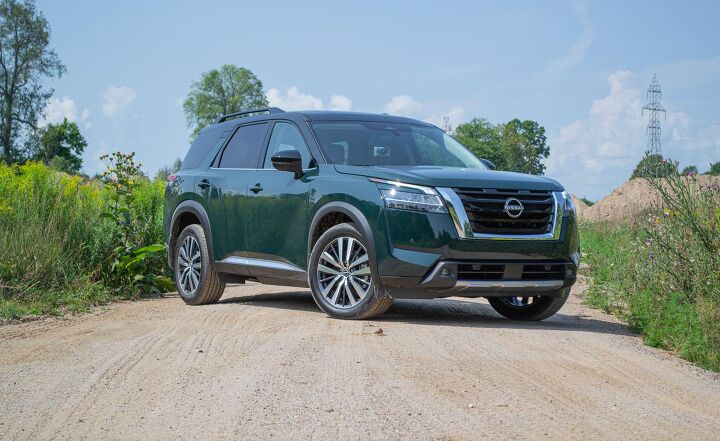




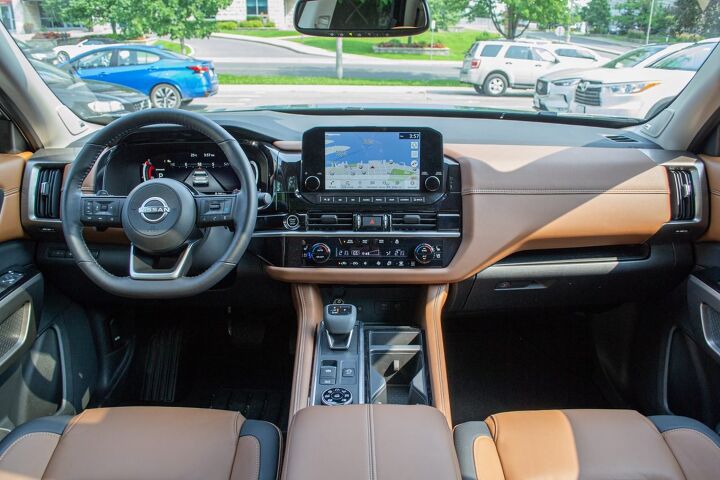



















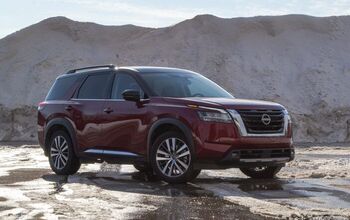

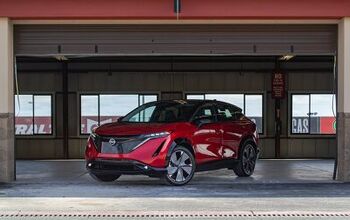
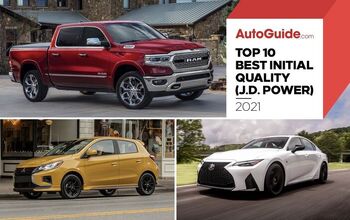

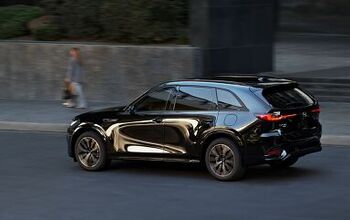
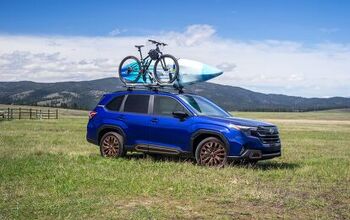

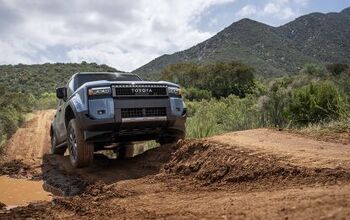
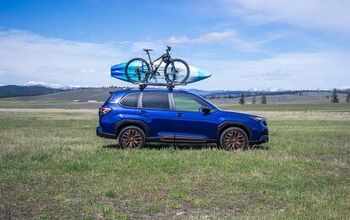


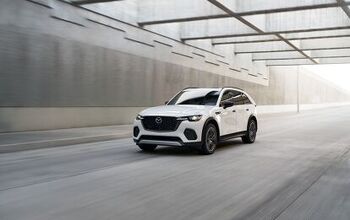
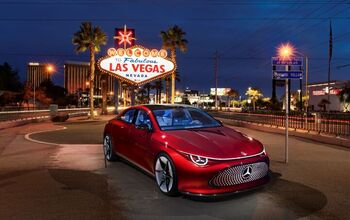
Comments
Join the conversation